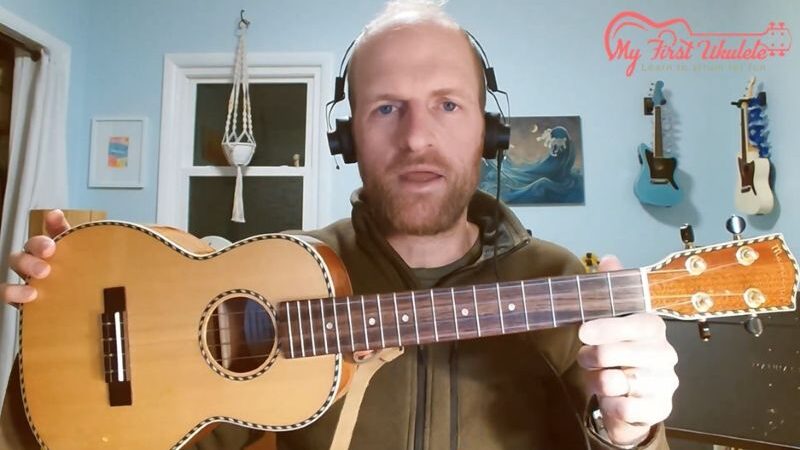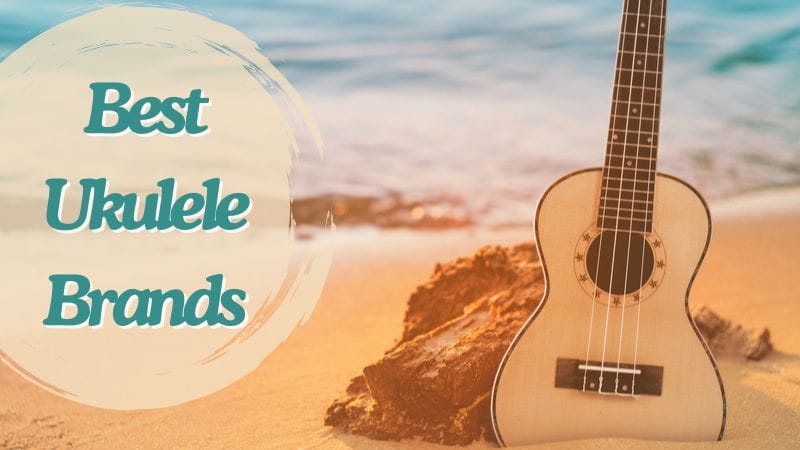A Beginner’s Ukulele Price Guide from John at MyFirstUkulele.com
Searching for the cost of a ukulele is easy—but figuring out how much you actually need to spend on your first ukulele? That’s where things get a little tricky. I get it—if you’re new to the instrument, you don’t want to overspend before you know it’s for you. But at the same time, buying something too cheap can be a fast track to frustration.
So in this ukulele price guide, I’ll walk you through what to expect at different price points and help you find that sweet spot between budget and quality.
My First Ukulele: Fender Venice Soprano
Let’s start with my very first ukulele—a Fender Venice soprano. This one retails for about $59 and is a laminate uke. While Fender isn’t exactly the top name in ukuleles, they’ve produced some solid entry-level options. Some of their models are overbuilt and don’t resonate as well as others, but I’ve enjoyed this one for what it is.

It’s lightweight, has a super comfortable neck, and even though it’s no-frills, I still reach for it when I want to strum on the couch. That said, knowing what I know now, I’d go for something else as a first ukulele.
What I’d Choose Today: Enya Nova Concert or Tenor
If I could go back in time, I’d probably start with the Enya Nova ukulele—either in concert or tenor size. It’s a carbon fiber ukulele that’s great for travel and resistant to humidity changes (a big plus if you’re not storing your uke in a climate-controlled space).

Best of all, it comes as a complete kit—strap, capo, extra strings, even a case. That would’ve saved me time and money when I had to go back and buy accessories separately.
Ukulele Price Guide: What You Get at Different Price Points
Let’s break it down by price bracket so you can better understand what to expect depending on your budget.
$50 Range: Budget-Friendly, but Barebones
In this range, you’re mostly looking at no-name laminate ukuleles. Sound-wise, they can be a bit thin or “plunky.” The tuning pegs might not hold well, and build quality can vary. These are sometimes closer to toys than instruments. But if you’re just testing the waters and can’t spend more, it’s not a terrible place to start—as long as your expectations are in check.
My pick: Fender Venice soprano ($59) – playable, but not ideal for everyone.
$100 Range: Beginner Starter Kits
This is where beginner ukulele bundles really start to shine. You’ll find better build quality and often get extras like a case, tuner, and strap. Laminate construction is still standard, but brands like Enya and Kala offer solid value here.
Recommended: Enya Nova U concert or tenor – durable, sleek, and fully kitted out.
$150 Range: Gig-Ready Laminate Ukuleles
At this price, you start seeing better craftsmanship, sometimes with electronics built-in for amplification. These are laminate ukes with bigger bodies and better volume projection—perfect if you’re looking to gig or want an instrument that stands out a bit more.
My pick: Caramel ukuleles – large body cavity, decent volume, and plug-in ready.
$200 Range: Entry-Level Solid Tops
This is where you start getting into “proper instrument” territory. Many ukes at this level feature a solid wood top (as opposed to all-laminate construction), which helps with tone and resonance.
Consider brands like Kala or Lanikai for affordable solid tops.
$300+ Range: Serious Sound, Beautiful Craftsmanship
If you’re sure you’re sticking with the ukulele, it might be worth investing in a solid wood instrument. For example, my Mainland Solid Top Spruce Mahogany Tenor (around $310) offers significantly better resonance and a fuller sound. Solid wood vibrates more freely, meaning the sound is richer and louder—up to 3–4x compared to a basic laminate model.
Caution: Solid wood ukes need more care—humidity control, proper storage—but the payoff is worth it for serious players.

Laminate vs Solid Wood Ukuleles: What’s the Difference?
- Laminate ukuleles are made of thin layers of wood glued together. They’re more affordable, durable, and less sensitive to weather changes—but don’t resonate as well.
- Solid top ukuleles (or all-solid wood) are more responsive and sound richer, but they do require more upkeep.
For most beginners, laminate is just fine—especially if you want to keep things simple and low maintenance. But if you’re already in love with the instrument, a solid top is a great long-term investment.
So… How Much Should You Really Spend on Your First Ukulele?
Here’s my honest take:
Aim to spend between $100 and $200 on your first ukulele.
Why? Because in that range, you’ll get:
- A quality laminate uke that plays well and stays in tune
- Often a full starter kit with essential accessories
- A better chance at long-term enjoyment without breaking the bank
Sure, $50 ukes exist, but many of them are hard to tune, poor in tone, and might turn you off playing entirely. On the other end, $300+ ukes are incredible—but only worth it if you already know this is your new passion.
Ukulele Recommendations by Budget
- $50–$75 – Fender Venice (good intro, but limited sound)
- $100–$130 – Enya Nova Concert or Tenor (great all-in-one kit)
- $150 – Caramel ukuleles (big sound, plug-in option)
- $200–$300 – Kala solid tops, Mainland ukuleles (beautiful tone, ideal for committed players)
Final Thoughts
I hope this ukulele price guide helps you feel more confident about choosing your first instrument. Remember, you don’t have to spend a fortune to get something that plays well and inspires you to keep going.
If you’ve got ukulele questions, topic suggestions, or song requests, leave a comment below—I’d love to hear from you.
Happy strumming!

John Allnutt
Writer & Ukulele TeacherJohn has been teaching music since 2008 and resides in Richmond, Kentucky with his wife Laura and dog Sam. In his spare time he enjoys growing and cooking food, roasting coffee, playing board games, and spreading joy through playing and teaching music.






can you get a starter kit with a solid wood ukulele?
Hi Dan! Good question. Starter kits mostly include laminate instruments to keep costs down. I haven’t come across any true ‘solid wood’ ukulele starter kits available in the marketplace (although many retailers will often refer to their ukes as ‘solid mahogany’, when really they’re laminate!) If you’re after a warmer tone, you could look for a solid-top ukulele (like solid spruce or mahogany) — it’s a nice middle ground between laminate and full solid wood. Again, unlikely to be in a tidy starter kit though, but you can always grab the extras separately as you need them.
I hope that helps!